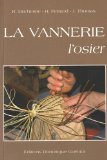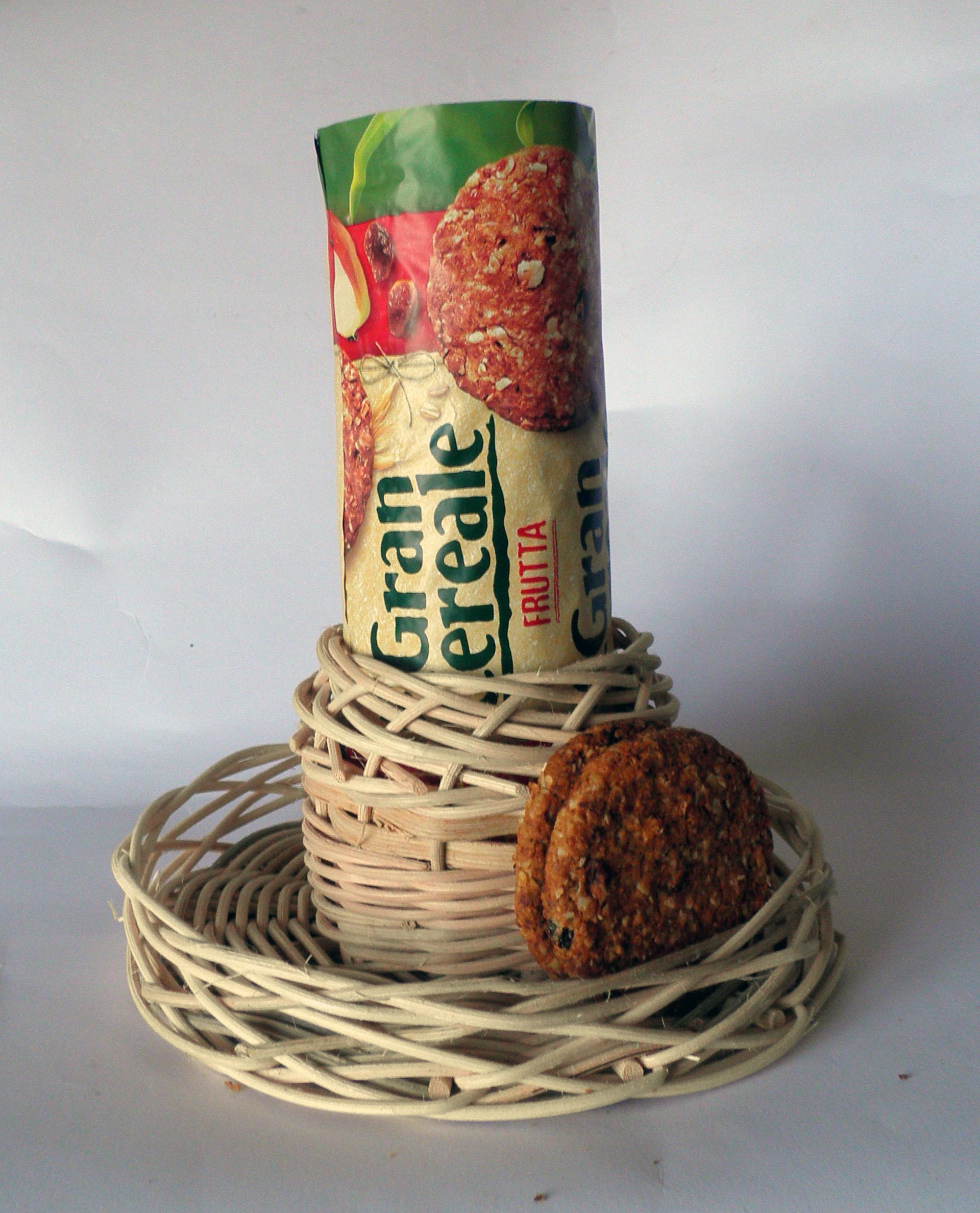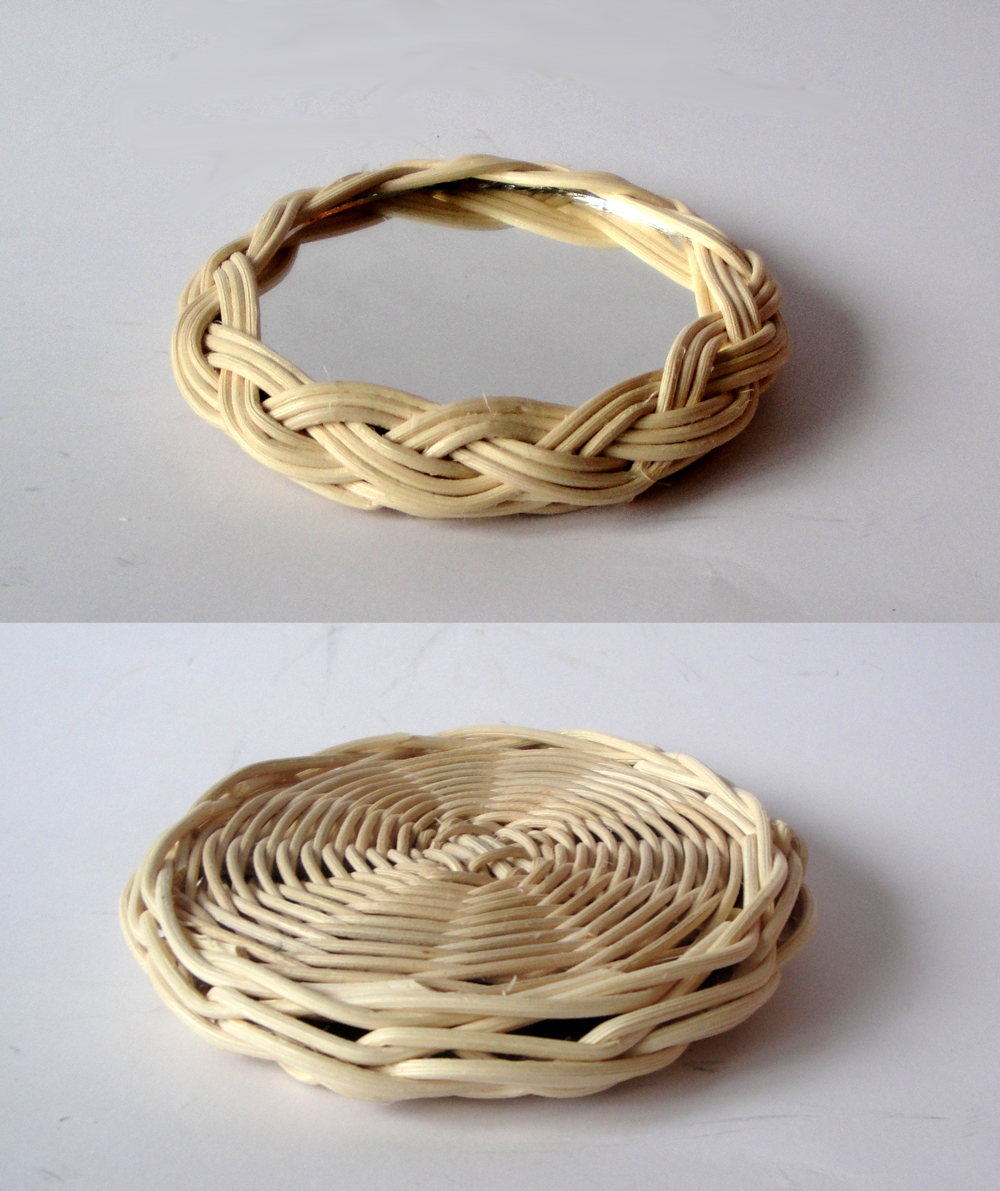La vannerie: I L’osier, II Le rotin (Robert Duchesne)
 Pubblicato in 2 volumi negli anni ’60, questo libro o meglio questo monumento, è il succo della tradizione semi-industriale della grande cesteria francese (oramai in declino come tutte quelle occidentali). Gli autori infatti sono insegnanti della allora École Nationale de Vannerie de Fayl-Billot (oggi parte del Lycée Horticole), la quale ne ha ripubblicato il secondo volume (dedicato ai vimini) recentemente. Il motivo è semplice: si tratta del libro da cui derivano gli altri (come il Pieroni e perfino il Dunand). C’è tutto, magari con una impaginazione datata, qualche refuso ortografico, dei disegni o meglio schizzi migliorabili, poche foto in bianco e nero. Ma di migliori sotto il profilo della completezza non se ne faranno, perché molti dei cesti elencati nel libro non si usano più e sono spariti, insieme ai loro costruttori. Ci sono valigie, cesti di tutte le misure per l’agricoltura, cesti per uccelli, per pescare, museruole, mobili… Perfino il van (da cui deriva il francese vannerie per “cesteria”), ossia il setaccio per separare la pula dal grano: una cosa che il povero Duchesne definsice “aussi compliquée que pénible” ed io non so nemmeno se abbia un nome preciso in italiano. Riguardo alle tecniche , basti sapere che qui è l’unico posto dove ho trovato la spiegazione di come fare un manico a treccia mobile (cioè con degli anelli alle estremità per agganciarlo a dei passanti su cui ruotare).
Pubblicato in 2 volumi negli anni ’60, questo libro o meglio questo monumento, è il succo della tradizione semi-industriale della grande cesteria francese (oramai in declino come tutte quelle occidentali). Gli autori infatti sono insegnanti della allora École Nationale de Vannerie de Fayl-Billot (oggi parte del Lycée Horticole), la quale ne ha ripubblicato il secondo volume (dedicato ai vimini) recentemente. Il motivo è semplice: si tratta del libro da cui derivano gli altri (come il Pieroni e perfino il Dunand). C’è tutto, magari con una impaginazione datata, qualche refuso ortografico, dei disegni o meglio schizzi migliorabili, poche foto in bianco e nero. Ma di migliori sotto il profilo della completezza non se ne faranno, perché molti dei cesti elencati nel libro non si usano più e sono spariti, insieme ai loro costruttori. Ci sono valigie, cesti di tutte le misure per l’agricoltura, cesti per uccelli, per pescare, museruole, mobili… Perfino il van (da cui deriva il francese vannerie per “cesteria”), ossia il setaccio per separare la pula dal grano: una cosa che il povero Duchesne definsice “aussi compliquée que pénible” ed io non so nemmeno se abbia un nome preciso in italiano. Riguardo alle tecniche , basti sapere che qui è l’unico posto dove ho trovato la spiegazione di come fare un manico a treccia mobile (cioè con degli anelli alle estremità per agganciarlo a dei passanti su cui ruotare).
Naturalmente si tratta di un libro molto tecnico per professionisti. Vi si trovano ad esempio indicazioni sui mezzi meccanici per la trafilatura del materiale, l’uso delle forme in legno, le misure standard dei cesti, l’organizzazione dei compiti nella fabbrica… Quindi per leggerlo oltre a sapere il francese, bisogna avere solide basi di cesteria per essere in grado di “immaginarsi” i sottintesi.
Il primo volume è dedicato alla lavorazione soprattutto dei vimini, ma si può applicare a qualsiasi materiale. Il secondo volume ha un titolo che trae in inganno, perché non tratta del midollino in generale (di cui si parla nel primo volume) ma solo ed esclusivamente dei mobili in midollino e dell’impagliatura delle sedie.
Published in 2 volumes in the 1960s, this book or rather this monument is the juice of the semi-industrial tradition of the great French basket maker (now in decline like all the western ones). In fact, the authors are teachers of the École Nationale de Vannerie de Fayl-Billot (today part of the Lycée Horticole), which has recently republished the second volume (dedicated to wicker) recently. The reason is simple: this is the book from which the others derive (like Pieroni and even Dunand). There is everything, perhaps with a dated layout, some spelling errors, drawings or better sketches that can be improved, a few black and white photos. But they will not be better in terms of completeness, because many of the baskets listed in the book are no longer used and have disappeared, together with their builders. There are suitcases, baskets of all sizes for agriculture, baskets for birds, for fishing, muzzles, furniture … Even the van (from which the French vannerie derives for “basket”), ie the sieve to separate the chaff from wheat: something that poor Duchesne defines “aussi compliquée que pénible” and I don’t even know if he has a precise name in Italian. Regarding the techniques, just know that here is the only place where I found the explanation of how to make a movable braid handle (i.e. with rings at the ends to hook it to loops on which to rotate).
Of course it is a very technical book for professionals. For example, there are indications on the mechanical means for drawing the material, the use of wooden forms, the standard sizes of the baskets, the organization of the tasks in the factory … So to read it in addition to knowing French, you must have solid baskets for being able to “imagine” the implications.
The first volume is dedicated to the processing of mainly wicker, but can be applied to any material. The second volume has a title that is misleading, because it does not deal with the rattan in general (which is mentioned in the first volume) but only and exclusively with the rattan furniture and the stuffing of the chairs.
![]() Vota questo libro nella lista “Livres de Vannerie” di Goodreads/ Rate this book in the list “Livres de Vannerie“ of Goodreads: https://www.goodreads.com/list/show/75713.Livres_de_vannerie
Vota questo libro nella lista “Livres de Vannerie” di Goodreads/ Rate this book in the list “Livres de Vannerie“ of Goodreads: https://www.goodreads.com/list/show/75713.Livres_de_vannerie
![]() Dove l’ho preso / Where I got it: la riedizione del primo volume su PriceMinister (€22,80), il secondo in edizione originale su ebay (€18,50)
Dove l’ho preso / Where I got it: la riedizione del primo volume su PriceMinister (€22,80), il secondo in edizione originale su ebay (€18,50)
 La vannerie
La vannerie
(ed. orig. Nouvelle Bibliothèque Professionnelle)
Manuale
Éditions Dominique Guéniot (ed. orig. J.-B. Bailliére et Fils)
2009 (ed. orig. 1963)
Brossura
379

ISBN 9782878254532






